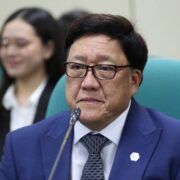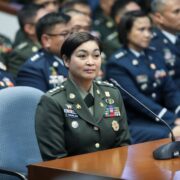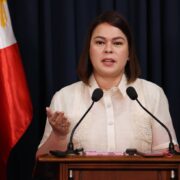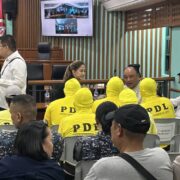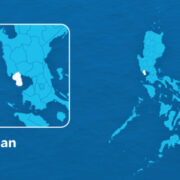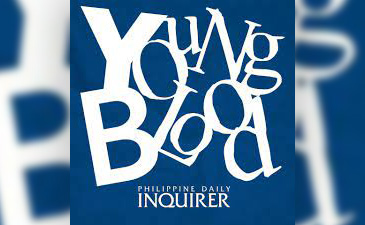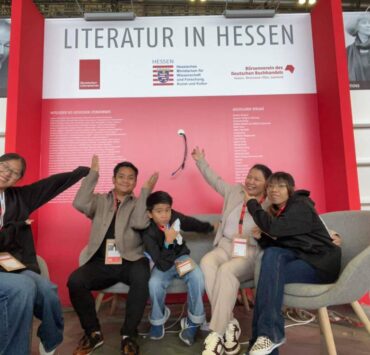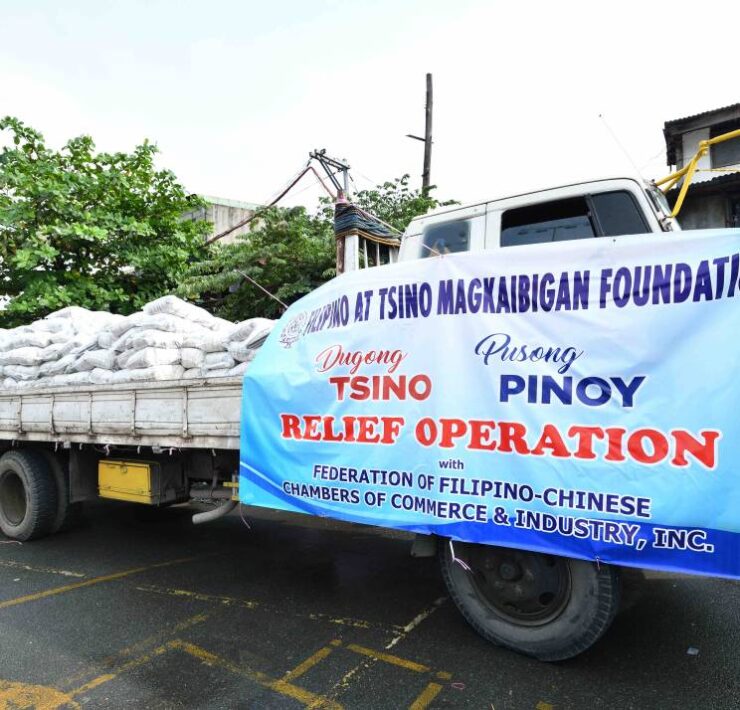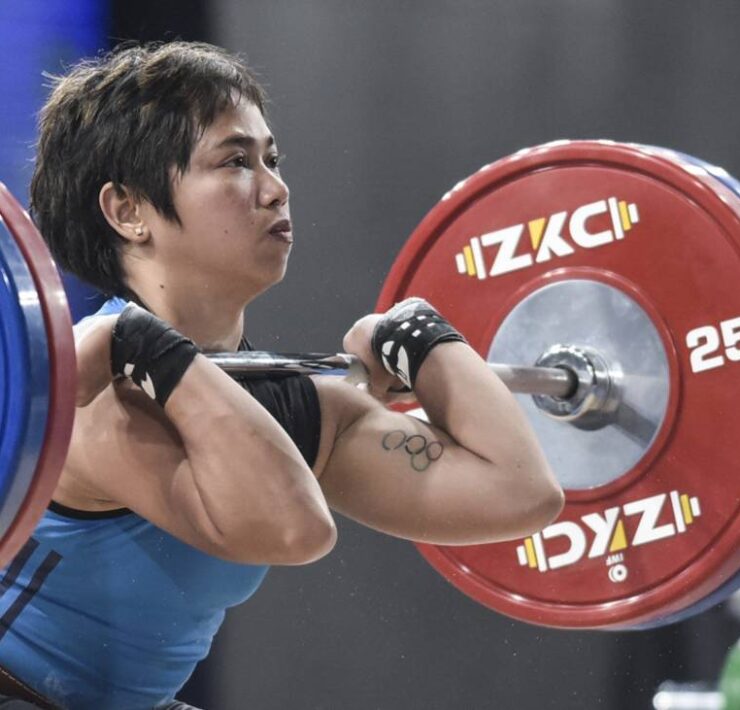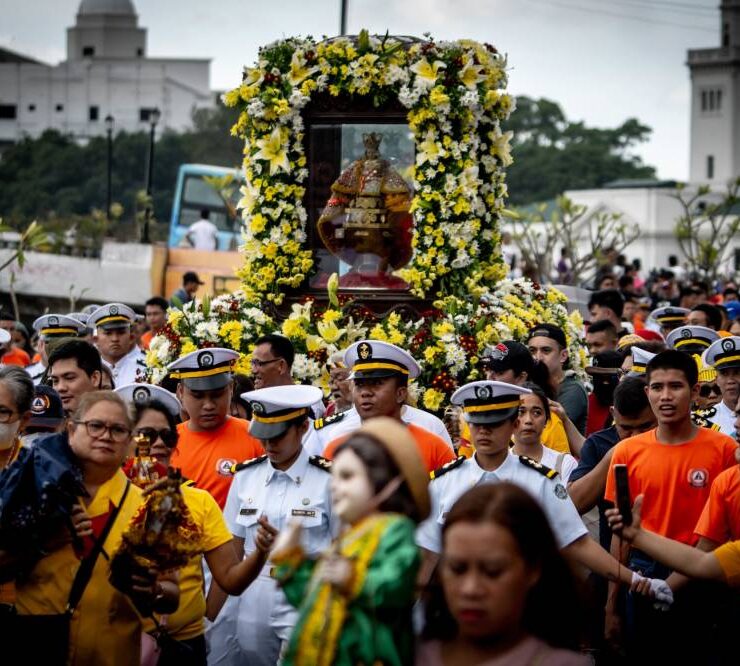39 noteworthy Filipino books of 2024
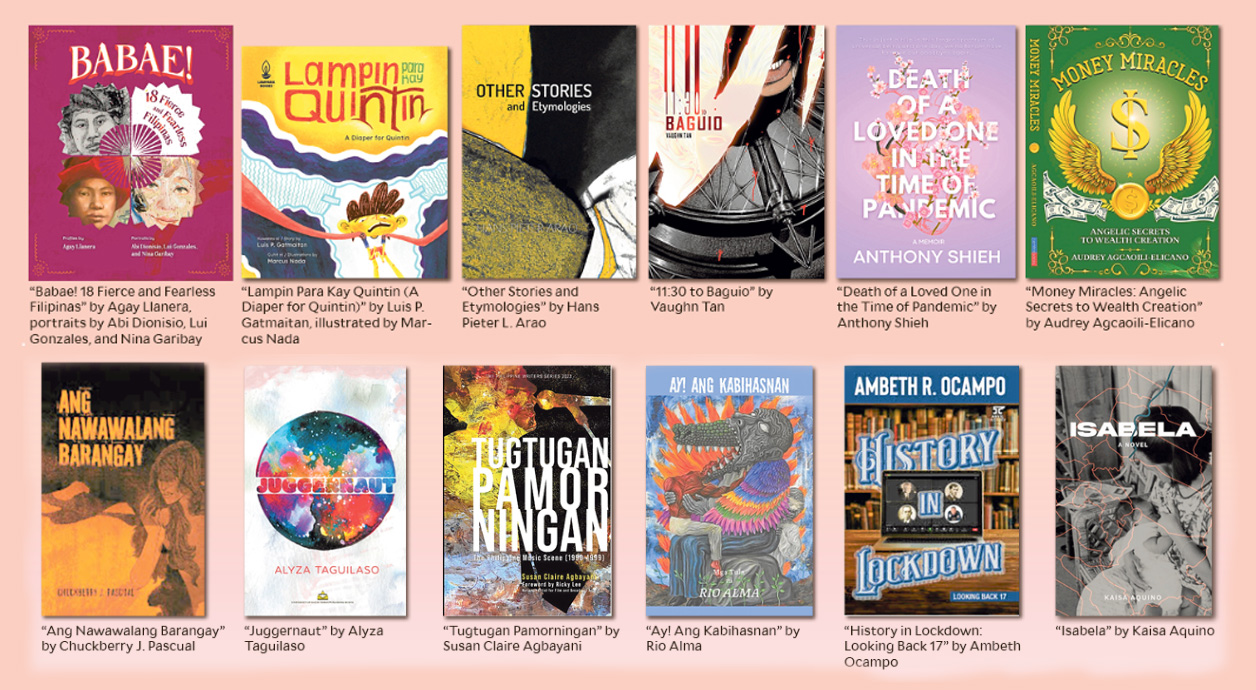
Drawing up the year’s noteworthy titles was a pleasant challenge. The assigned number of 39 titles was initially intimidating, with the picking and selection hard, as always. Yet at the final reckoning, I found my list way beyond 39.
The most interesting discoveries were the wide range of genres represented, written in English, Filipino, and other Philippine languages, happily coming from the wider number of diverse publishers, from the traditional to the indie to the self-published.
Philippine publishing is alive and well. All in all, a reassuring sign that we are well on our way to fulfilling the country’s role as guest of honor at the Frankfurter Buchmesse on Oct. 16 to Oct. 20, 2025.
1. “Money Miracles: Angelic Secrets to Wealth Creation” by Audrey Agcaoili-Elicano, Centralbooks
Described as not-your-usual wealth guide, it is meant to be a journey into mystical realms where “divine support and universal energy align” to lead readers to the many secrets of prosperity. It is the author’s personal journey with her angels always giving her guidance, which she wishes to share with the readers. To the Singapore-based author who teaches such classes and works with crystals, financial success and spiritual growth need not be incompatible.
2. “Six Filipino Women for Justice” edited by Asuncion David Maramba, San Anselmo Press
In a nation that yearns for justice, these six women stand up for courageously challenging a flawed judicial system. This pays tribute to these women—Leila De Lima, Risa Hontiveros, Mary John Mananzan OSB, Conchita Carpio-Morales, Maria Ressa, Leni Robredo—all of whose stories manifest the “power of conviction and the impact of standing firmly for justice amid overwhelming opposition.”
3. “So Heaven” by Isagani R. Cruz, Milflores Publishing Inc
This novel comes as a surprise from a well-known and awarded critic, writer, playwright, columnist as it departs from the usual genres associated with him. But it befits Cruz, the book lover, as this romantic novel is wild and wacky, with the poems of Emily Dickinson being presented to an e-publishing magnate, along with brushes with Rizal and Shakespeare. This novel had been translated into Turkish before this original English novel saw print.
4. “Si 0” by Kristian Sendon Cordero, illustrated by Rodel Tapaya, Savage Mind Publishing House and Istorya Studios Inc
This comes in a very limited edition in risograph but calls attention because of the author and the artist, both well-known and lauded for their talent. Written in Filipino, the author cautions the reader that this is not for children, though they may fancy it. It begins, “Ang kuwentong ito ni 0 ay wala lang.” No one wanted to play with 0 because it only meant bad luck. And how to look for it in games when it is not there? 0 discovers 1 and the numbers play games, discovering the wonders of their partnerships, no longer minding that 0 takes the lead.
5. “Ransomed by Love: A Happy Changemaker’s Unfinished Journey” by Tony La Viña, Southern Voices Printing Press
The author, born and raised in Mindanao, is a lawyer, social entrepreneur, activist, and teacher who marked his 65th birthday with this memoir of “sickness, solitude, and solidarity.” Described as neurodiverse, ADHD, bipolar, and a cancer survivor, he writes with much hope and faith. He is a passionate advocate for human rights, indigenous peoples and local communities, social accountability, good governance, environmental sustainability, and climate justice. He proudly declares himself a son of Mindanao. “Whatever road I choose to travel and wherever my journeys end, I bring Mindanao with me. And it is to Mindanao that I return.”
6. “Dogeaters” by Jessica Hagedorn, Penguin Classics
I make a special exception to this title because although it is published in the United States, it was originally an Anvil publication in 1990. Hagedorn is also the first Filipino woman author selected by Penguin Classics to join the ranks of Jose Rizal, Carlos Bulosan, Jose Garcia Villa, and Nick Joaquin whose works it has published for an international audience. “Dogeaters” has been named one of The Atlantic’s Great American Novels of the Past 100 Years, was a finalist for the National Book Award for Fiction, and an American Book Award winner.
7. “Other Stories and Etymologies” by Hans Pieter L. Arao, Isang Balangay Media Productions
A debut collection of nine stories, it explores the lives of people “alienated by choice or circumstance” and their attempts to cling or find bits and pieces of what they have left behind. Some lines from the final story: “Jun had expected that the endless fields would liberate him. But here he found he was wrong. One could feel cramped in open spaces … the absence of walls meant that the oppression was limitless—it followed him whichever way he went. It was present in the trees, ancient, yet still, sure to outlive them all …”
8. “Tatlong Proposisyon ng Puting Hangin” by Luna Sicat-Cleto, Isang Balangay Media Productions
This collection of short stories in Filipino is heralded to be postrealism at its best in the 21st century. The author’s narrative style teases and takes the reader to explore experiences of violence, sadness, love. There is a tinge of bitterness each time because of experiences we want to forget, but should not forget. It must be mentioned that the author’s poetry book, “Bago Mo Ako Ipalaot,” has recently been translated into German, for which she did readings in Switzerland and Germany.
9. “Duongan” by Mikka Ann V. Cabangon, Isang Balangay Media Productions
A first published collection of poems in Filipino, it shows much promise on the artistry of the poet-visual artist. The scenes of nature’s sights and sounds are memorable and enchanting. The chapter dividers with the poet’s own artwork are precious touches. She is a visual artist under the name Maya Leon. A BA Art Studies graduate majoring in Philippine Arts, Cabangon has been named Makata ng Taon ng Talaang Ginto 2023 of the Komisyon sa Wikang Filipino. She has also been awarded a Palanca for her short story for children.
10. “Death of a Loved One in the Time of Pandemic” by Anthony Shieh, Centralbooks
The author takes us on his own personal journey of grief, pain and isolation through his mother’s illness and eventual death. But optimism and hope triumph. There is much candor and honesty in his writing, making it easy for the general public to relate to his personal ups and downs. He talks of his mother’s acceptance of his preferred partner and casually wrote, “If I could come out of my closet before, I can come out of this grief too. I just need time to heal, time to rediscover myself, and pick up the pieces scattered on the ground since I lost my mom. Not to put my broken pieces back together, but to transform them …”
11. “Love na Love ni Lola ang Lila (Grandma Loves Violet)” by Jacqueline V. Franquelli, illustrated by Aldy C. Aguirre, OMF Literature Inc. for Hiyas
Everything is violet for Lola in this bilingual edition in English and Filipino. Her bedroom is a violet explosion, even her toothbrush, comb, mirror, why, even her favorite “shabby” housedress that she is determined to continue wearing. Of course, the purple rice cakes, too, and the ginataang bilo-bilo. The granddaughter-narrator wonders why this passion for violet, and Lola teaches her very simply a tolerance for different tastes. At story’s end, guess who begins to love violet, too, and seeks “lilac, indigo, lavender, magenta, plum, purple.”
12. “Cautionary Tales from a Filipino Childhood” by Bambi and Roland Amago, Komiket
Consider a sampling of these tales: “Dancing crosses spoil a manananggal’s would be dinner. Three friends go anting-anting or amulet hunting on Good Friday. An alluring young lady brings an enamored tricycle driver to an unexpectedly hair-raising location. These are narratives said to be what our elders recited on humid summer nights, told in hushed whispers for children to behave. Stories meant to entertain the restless, but ultimately kept them up at night.”
13. “11:30 to Baguio” by Vaughn Tan, Komiket
If you are into the horror genre, this graphic novel is for you. On a bus bound for Baguio, a man wakes up to find his head severed and mechanically attached to a massive alien creature he can control. It is Pinoy folklore and cosmic horror at its most haunting. A favored combination for readers these days.
14. “Alamat Origins” edited by Budjette Tan and Karen Kunawicz, Komiket
This is an important piece of historical documentation as it takes us all back to the stories and art that ushered in a new generation of independent Filipino comic book creators. Described as ”a much-awaited anthology,“ it carries the first and sometimes only issues of 17 titles released by the Alamat comics group in the ’90s. Said komiks are proudly said to “have now been unearthed, remastered, and revived for new readers to enjoy.”
15. “Niño Bughaw” by CJ Reynaldo, Komiket
This is fantasy comics where the protagonist is a deaf character communicating through sign language. But despite that disability, he has the power to control the weather. He is the son of weather engkantos, magical beings who protect the land and live in harmony with mortals. One day an evil engkanto named Sigwawa attacks the village and kidnaps Niño’s parents. Niño must join forces with his engkanto family and his only friend Migo to embark on a perilous journey to save Niño’s parents and the entire village from Sigwawa’s wrath.
16. “School Run” by Macoy Tang and Ardie Aquino, Komiket
In postzombie apocalypse Philippines, life is good. But there is an ever-present zombie plague. Maki and her friends discover that just getting to school in the morning can be a challenge. A tongue-in-cheek zombie story with humor, action, social commentary, and the “undead munching on kids.”
17. “Field” by Allan Justo Pastrana, Good Intentions Books
This collection of poetry is described as weaving in and out of the political, the historical, the familial. But it has to be mentioned that the author seamlessly weaves in and out of languages and bold literary forms. He challenges the reader to question and think and think deeply. How apt that one of the book blurbs declare, “Pastrana’s lyric sequence haunts like an oracion, recited to summon the dead, the lost, the undertain if dead or lost, because maraming pangalan ang hindi makaalpas. ..”
18. “Babae! 18 Fierce and Fearless Filipinas” by Agay Llanera, portraits by Abi Dionisio, Lui Gonzales and Nina Garibay, Canvas (Center for Art, New Ventures and Sustainable Development)
Eighteen women, both familiar and yet unfamiliar to young readers, are classified into three different fields and are profiled with accompanying portraits. They are: Courage and Revolution: Gabriela Silang, Melchora Aquino, Maria Orosa, Nieves Fernandez, Carmen Rosales, Maria Lorena Barros; Art and Culture: Remigia Talusan, Leona Florentino, Pelagia Mendoza, Maria Carpena, Damiana Eugenio, Mona Sulaiman; Leadership and Public Service: Tuan Baluca, Sultana Nur ul-Azam, Rosa Sevilla de Alvero, Maria Rosa Henson, Haydee Yorac, Fe del Mundo.
19. “Huni sa Kawayan” by Fernando Rosal Gonzalez, illustrated by Anthony Palomo, Canvas (Center for Art, New Ventures and Sustainable Development)
This is about the making of the Bamboo Organ, which is marking its 200th year anniversary. This bilingual book describes the wonderful chirping of birds that a boy hears from his bedroom reproduced and appreciated by many with the new bamboo organ in church.
20. “Papatak-Patak: Ang Sakit Umihi (Tinkle-tinkle, It Hurts to Pee)” by Luis P. Gatmaitan, illustrated by Rhea Kristine U. Elnar, OMF Literature Inc. for Hiyas
Gatmaitan continues with his series on ailments and illnesses with this children’s story on urinary tract infection (UTI) which is common among grade school students because of improper hygiene practices and high intake of salty foods such as cup noodles, chips, soft drinks. This bilingual book addresses a topic often requested by public school teachers.
21. “Lampin Para Kay Quintin (A Diaper for Quintin)” by Luis P. Gatmaitan, illustrated by Marcus Nada, Lampara Books
This addresses the problem of bedwetting among grade school students who are usually embarrassed about this as they are already supposed to be weaned from diapers and have complete bladder control at this age.
22. “Mandelbrot Set, Room 1, Seismometer, Tongue” by Soleil David, cover art of Sang Tamayo, Everything’s Fine
These are English translations of selected stories from Carlo Paulo Pacolor’s “Ang Kompedio ng mga Imposibleng Bagay,” also from Everything’s Fine. Call the book a foursome as putting them together completes the artwork of Sang Tamayo.
23. “The Book of the Grid: From the Words We Speak to the Hidden Meaning of Things” by Luis Umali Stuart, Everything’s Fine
This is a book on the discovery in language through Tagalog verbs. With a foreword by anthropologist-linguist Nicole Revel, the first iteration of this study of Tagalog verbs also warranted an email exchange with Noam Chomsky. Other supporters of the study from its inception are mentioned in the introduction, from Chomsky to Laida Lim to Rolando Dizon FSC to Isagani Cruz.
24. “Nail Down the Sky” by Jam Pascual, Everything’s Fine
This is described as “a poetry collection that is rare in its self-conscious contemporaneity, speaking of and to a generation that lives in complexity and nuance, for whom the sensing of joy and grief, belief and ideology are in constant flux, and about which each poem is an unraveling and becoming.” A book that beckons.
25. “Writing Freedom,” by Angela Stuart-Santiago and Katrina Stuart Santiago, Everything’s Fine
A mother-daughter tandem has collected their essays on freedom and democracy relative to the work of the elder Stuart-Santiago on the 1986 Edsa Revolution. The daughter, a martial law baby, writes her essays on her own experience growing up post-Edsa. It is interesting to see how the narratives, independently written by the authors, coincide and juxtapose.
26. “History in Lockdown: Looking Back 17,” by Ambeth Ocampo, Anvil Publishing
This is billed as a collection of essays written during the lockdown using historical perspectives to understand the pandemic’s impact. Each piece reflects on the collective struggle and introspection about life as the world was under lockdown.
27. “Isabela,” by Kaisa Aquino, Ateneo University Press
A mother, daughter, wife, lover, friend, teacher, cadre—these are the voices that make up the saga in Isabela, told against the backdrop of nearly three decades of our history. This is the moving story of how a life is “shaped, wounded, and made whole by the ongoing insurgency in the countryside. How a life takes on many forms, by force or fate.” “Isabela” successfully draws a memorable landscape of a place, time, and woman.
28. “Unrequited Love,” by Marites Dañguilan Vitug and Camille Elemia, Ateneo University Press
This tells the story of former president Rodrigo Duterte’s pivot to China. It analyzes the factors that influenced him, the results of the policy shift on the West Philippine Sea, the rule of law, Chinese loans, grants, and pledges for infrastructure and many other projects, attempts to influence the military, the political parties, Philippine media, and the public, and how various institutions responded. The authors are both award-winning journalists.
29. “30 Tagay Kay Marne: Mga Salin ng Tula ni Marne Kilates,” ed. by Virgilio S. Almario et al., Aklat Bulawan, Filipinas Institute of Translation (FIT)
We lost noted poet Marne Kilates on July 20. On Nov. 5, which would have been Marne’s 72nd birthday, his group of poet friends led by National Artist Virgilio Almario paid him tribute with a launch of a collection of his poems that his poet colleagues translated to Filipino. The “30” in the title refers to the standard way a writer indicates the end of an article or story submitted for editing.
30. “A Whale in Prison,” by Mary Ann Ordinario, illustrated by Danielle Florendo, ABC Educational Development Center Children’s Books Inc
This book is the Cardinal Sin Best Children’s Story for 2024. It describes the biggest cause of harm and death to whales, when they are trapped in fishing nets and ropes. It impresses on children that we are all responsible for protecting our earth, our home, and one another.
31. “Hiya,” written and illustrated by Liza Flores, Adarna House
The author and illustrator, one of the most significant illustrators for children’s literature today, is well known for her exquisite paper cutout art which is expectedly prominent in this “mood” story. The art tells the story, and the story itself is about a shy boy trying to work with scissors as he does a paper cut art project on mask-making.
32. “Buhi sa Kanunay (Forever Alive): Celebrating Friendships Through Time,” by Bro. Karl M. Gaspar CSsR
The author, a prolific Mindanaoan writer who has written 34 books in four decades, has compiled these eulogies as a tribute to individuals who have touched his and many other lives. The book title comes from a haunting Visayan love song.
33. “Different Countries,” by Clarissa V. Militante, Grana Publishing
This novel was longlisted in the 2009 MAN Asian Literary Prize and this edition is a revised and a reconceived one. It focuses on the hushed voices of abandoned and abused children. Essentially these are three stories of three different women tied to one another by the same historical thread.
34. “AntiMarcos,” by Khavn, Bughaw, an imprint of the Ateneo University Press
This won the Palanca Prize for the Novel. Khavn is a filmmaker, a poet, fictionist, and a film studies critic. National Artist for Literature Resil B. Mojares says of the novel: “Genre-bending, border-crossing, and risk-taking writers unsettle the literary field. This keeps the field open, vital, and alive. Intellectually adventurous, inventive, and promiscuous. Khavn is a writer Philippine literature needs.”
35. “Ang Nawawalang Barangay,” by Chuckberry J. Pascual, Avenida Books
This novel has elements of crime, mystery, LGBT, and light humor. Bree, the investigator of Talong Punay, returns to try to solve the mystery of the many disappearances in the barangay. In the course of his investigation, he discovers a religious group, the Swalla, and its links to the missing. The allure of religion and social media comes into focus, along with the “politics of despair and disempowerment.”
36. “Ay, Ang Kabihasnan!” by Rio Alma, University of the Philippines Press
“Ay! Civilization” is the fourth collection of poems by the National Artist since the COVID-19 pandemic. Not surprising, as he was writing at least one poem a day! This is a fierce commentary on the prevailing ignorance that has developed from the power of colonial, Christianized, and Americanized civilization that was planted by Western colonialists for four centuries. Through his poems, he hopes the minds of Filipinos can be further developed and the poor and even the educated can rise from ignorance. And for democracy and justice to prevail in our country.
37. “Tugtugan Pamorningan: The Philippine Music Scene (1990-1999),” by Susan Claire Agbayani, University of the Philippines Press
This book can only come from a devout and passionate music lover and a journalist who has covered the pop music scene for about four decades. Agbayani recounts how after interviewing so many bands in a concert of 50 performers in “Tugtugan Pamorningan” in 1993, her life was never the same again. And there was a new career path. Thus, this book is an important document of Philippine popular music history, bringing the reader to milestones in the past which uncannily influence our present. As National Artist for Film and Broadcast Arts Ricky Lee wrote in his foreword, “These articles are music to the ears.”
38. “Philippine Theater (3 volumes)” by Nicanor G. Tiongson, Ateneo de Manila University Press
This collection of theater essays written from 1969 to 2023 is a significant contribution to the history of Philippine theater especially as it covers History and Genres; Traditions, Relations, and Contestations; Aesthetics, Critiques, and Personalities. The author’s scholarship and background as a theater scholar, critic, playwright, and university professor are evident in these volumes as he highlights our traditional dramatic genres, pursues his search for an identifiably Filipino theater, and studies the role of theater in the political life of Philippine society.
39. “Juggernaut,” by Alyza Taguilaso, University of Sto. Tomas Press
This debut poetry collection from a young female general surgeon offers contemplations on politics, trauma, medicine. It has been described in medical terms as delving into wounds “sutured by arresting imagery, pulsating lyric energy, and existential energy.”





